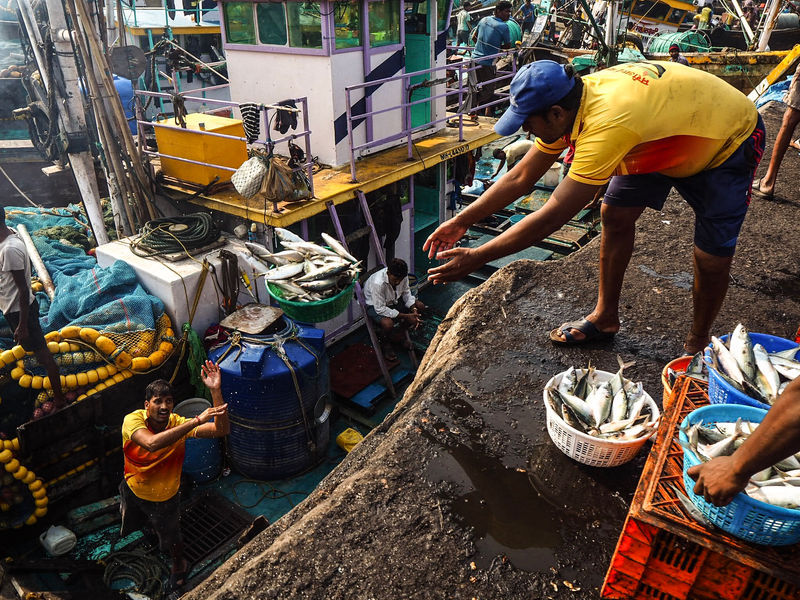
THE LAST OF THE KOLI?
By some accounts, the Koli bloodlines on the seven islands of Mumbai stretch as far back as the stone age. Their people fished the waters of Maharashtra long before Alexander’s armies reached the tip of India or Asoka’s empire swept across the subcontinent.
Generation after generation, the Koli have mended nets and hauled in their catch as the world around them changed. Great empires rose and fell around them like the ebb and flow of the tides. The Marata kings fought to keep the Mughals at bay, and the Portuguese traded the seven isles to the British as dowry for a princess.
These ancient mariners may have endured all this and more, but a century after the behemoth British land reclamation project that connected the islands into a single city, Mumbai’s Koli are now hemmed in by a towering metropolis that has corralled them into just 42 Koliwadas – a term that literally means ‘a home that opens to the sea.” The Kolis, like the ocean around them, are struggling to survive on the edge of an ever-expanding metropolis.
Rivers choking with pollutants dribble into the sea on their doorstep, adding more plastic to the debris already floating on the surface of nearby bays and river-mouths once abundant with fish. The Kolis can only watch with trepidation, as precious fish breeding grounds disappear as wetland mangrove forests are cut down like weeds in a field all in the name of development.
Yet, with their ancient gods by their side, the Koli remain resilient and are confident in their ability to weather this latest storm
.
Mahim Koliwada greets visitors with the sight of bundles upon bundles of fishing nets, and it takes a while to see the wooden boats underneath the tangle. Nestled among a mountain of these nets, an old man sits puffing the last bit of a beedi-cigar as he rhythmically untangles he threads to mend them. For a moment, it looks like the perfect fishing village. But not all is well.
The beach is covered with plastic waste. Beyond it, against the backdrop of the towering Worli Sea Link in the distance, boats gently rock back and forth upon the glassy surface of the dying bay.
Santosh Nijap has spent most of his life on this beach, like his father before him and his father before him, stretching back generation upon generation of Mahim Kolis.
With a Sai Baba pendant resting on his chest at the end of heavy gold chain, neatly dressed Santosh projects the very image of a local businessman.
He points to a few of his boats bobbing around in the bay and it’s clear he’s done quite well for himself. But even he is struggling to make a profit fishing near the bay since the newly built Worli Sea Link effectively cut off the flow of fish.
“A lot has changed in Mahim Bay because of the infrastructure in the ocean,” he says, explaining how the mammoth structure has altered the current that used to bring fish into the shallower waters.
“There is a barrier (blocking) the easy flow of fish to the shores, because of the multiple pillars and concrete structures,” he says.
The six-kilometre sea link that connects Mumbai’s western and central suburbs to the old town in the south, may have been a panacea for traffic congestion in Mumbai but Santosh says it has done little for the Mahim Koliwada.
Santosh says the Kolis now have to venture even further out, past the Sea Link into rougher waters. He says some of the smaller boats struggle to handle the waves and many Koli have lost their lives. The only choice now is to use larger trawlers that can withstand the open sea, but that requires increased manpower.
Affordible labour for fishing is hard to come by in the ever-expanding metropolis that offers an array of employment opportunities.
“Since fishing is not very profitable now, the youth are not ready for that kind of physical labour, so we need to get workers from villages which are 120-140kms away from Mumbai like Palgarh, Poisar, and Dahanu.” That too comes at a heavy cost.
“We have to give them huge amounts of money which is a problem given the state of our income,” Santosh says.
He says swapping Koli labour for outsiders is not profitable in the longer term. Santosh says what was profitable when it was family business, where the money stayed within the community, now struggles with wage labour pressures.
Even with the higher wages on offer, it’s still a struggle to find reliable workers.
“When the workers go home for festivals like Diwali and Holi, sometimes (they) don’t return back, and the boat owner has to go and bring back the workers from their villages,” Santosh says.
“Every time that happens you have to pay them an advance of almost 25-30 thousand rupees. So, one single trip to get these workers would cost an average boat owner almost 1lakh, given that even a small boat would need at least four workers to cover all the aspects of fishing successfully.”
Santosh says even that trickle of itinerant workers is fast drying up as new factories open in rural areas.
“These industries have more benefits and more income for the workers which they choose over toiling at sea on a boat in an industry with a bleak future.”







